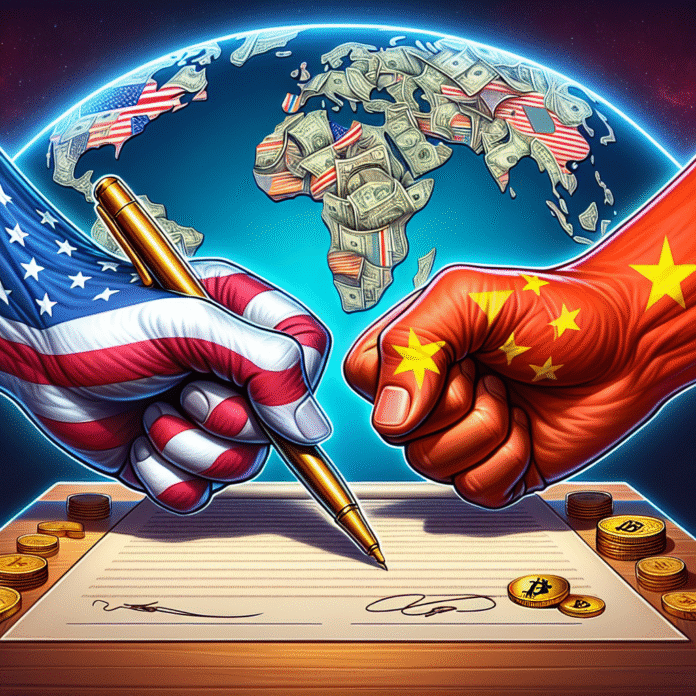Potential Impact of US-China Trade Agreement on Global Markets and Cryptocurrency
Implications of the US-China Trade Agreement for Global Markets and Cryptocurrency
The recent trade agreement between the United States and China marks a pivotal moment that could reshape the landscape of global markets and the cryptocurrency sector. This deal, designed to alleviate tariffs and foster economic cooperation, has significant implications not only for the two largest economies in the world but also for international trade dynamics and digital currencies.
Understanding the Trade Agreement
The US-China trade deal aims to resolve long-standing trade tensions that have escalated over the past few years. By addressing issues such as intellectual property rights, tariff reductions, and trade imbalances, this agreement seeks to create a more stable economic environment. One of the key elements of the deal is the commitment from both nations to engage in fairer trading practices, which could enhance bilateral trade flows and stimulate economic growth.
Impact on Global Markets
As the world watches the implementation of this trade agreement, investors are keenly aware of its potential to influence global market trends. A successful resolution of trade disputes may restore investor confidence, leading to increased capital flows into emerging markets. This renewed optimism could bolster stock markets worldwide, particularly in sectors heavily reliant on exports.
Moreover, the enhancement of trade relations between the US and China may prompt other countries to reevaluate their own trade policies, potentially leading to a wave of new agreements that could further benefit global commerce.
Repercussions for the Cryptocurrency Landscape
The trade deal’s influence extends into the realm of cryptocurrencies as well. As traditional financial systems and trade practices evolve, the demand for digital currencies is expected to rise. Cryptocurrencies like Bitcoin and Ethereum may gain traction as alternative assets for hedging against geopolitical risks and currency fluctuations associated with global trade dynamics.
Additionally, as the US and China strengthen their economic ties, it is likely that both nations will explore the integration of blockchain technology in their financial systems. This could pave the way for greater adoption of cryptocurrencies, as governments and financial institutions seek to enhance transaction efficiency and security.
Market Speculation and Investor Sentiment
Investor sentiment is a crucial factor in both traditional and cryptocurrency markets. Following the announcement of the trade agreement, market analysts predict a surge in speculative trading as investors react to the potential for economic growth. This increased activity could lead to heightened volatility, particularly in the cryptocurrency space, where market movements are often amplified by rumors and news cycles.
Furthermore, the trade deal may incentivize institutional investors to diversify their portfolios by incorporating cryptocurrencies. As more financial institutions recognize the potential of digital assets, this could contribute to a more mainstream acceptance of cryptocurrencies, further solidifying their place in global finance.
Conclusion
The US-China trade agreement has far-reaching implications for global markets and the cryptocurrency sector. By fostering a more cooperative economic environment, the deal could stimulate growth and innovation across various industries. As investors adapt to these changes, the cryptocurrency landscape may also experience significant transformations, influenced by shifting market dynamics and the evolving role of digital currencies in international trade. The coming months will be crucial in determining how these developments unfold and their impact on the global financial system.


